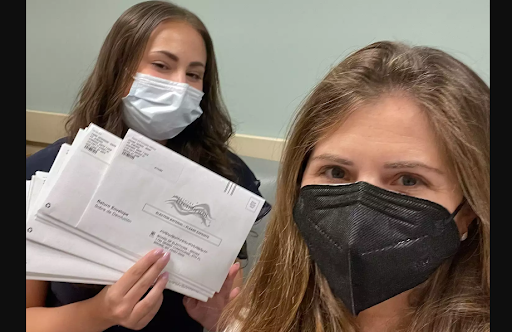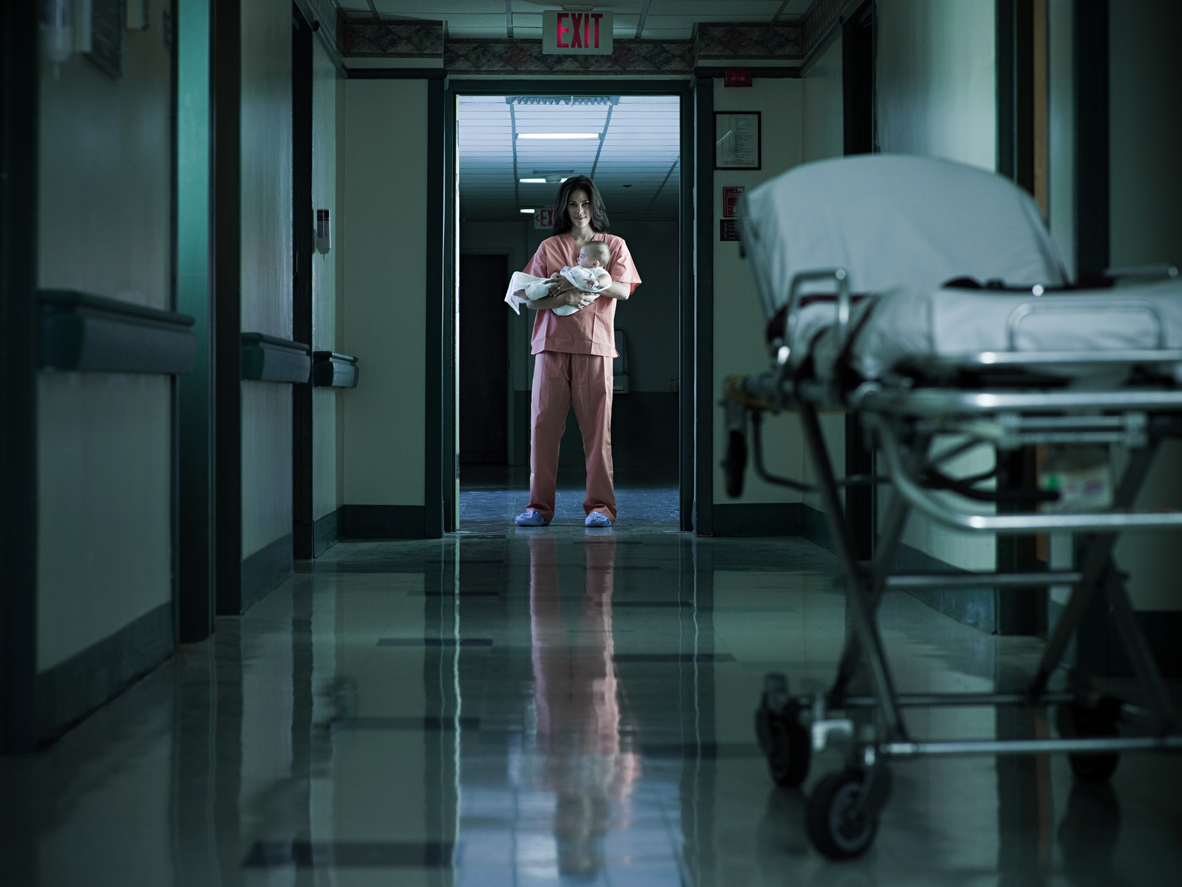The November Midterm elections are just two weeks away but participating in this year’s election will be a challenge for all the people in the hospital. There are around a million patients in hospitals across the country. They often have trouble requesting a mail-in ballot ahead of the election and can’t physically go to the polls on Election Day, Nov. 8th.
But a group of nurses in New York is working to make it easier for hospital patients to vote.
Lisa Schavrien, an obstetrics nurse in Manhattan, remembers treating a pregnant woman whose water broke earlier than expected back in 2016 just a few days before the election, but the woman was more concerned with her civic duty than delivering her baby. The patient told Schavrien, “The election’s tomorrow and I need to vote, what am I going to do?”
Schavrien became determined to deliver the woman’s vote.
“She’s having a baby and she’s thinking about voting,” she told her manager at the time. “This is obviously very important to her.”
The nurse managed to obtain an absentee ballot and brought it to the patient’s bedside as fast as she could. The woman quickly filled in her choices and Schavrien whisked away to the patient’s polling place all the way on Staten Island with minutes to spare. The entire trip took over an hour, but Schavrien said it was more than worth it.
The experience made her realize there are hundreds of thousands of patients all over the country who would like to vote but can’t because they are in the hospital.
“Every patient should have the right to vote if they choose,” Schavrien says.
She soon started working with her colleague Erin Ainslie Smith on a new project that would help get out the vote. By the time the 2018 Midterm elections came around, the pair had created a new program called Vote North, named after Northwell Health, which runs the facility they work at. It has since increased access to voting across the entire 400-bed hospital.
“Just because you’re in a hospital doesn’t mean you don’t count,” Smith says. “So giving patients the right to do what they already have earned the right to do is really important to me.”
During the 2020 election, 124 of the hospital’s approximately 300 patients voted from their bedsides and another 125 patients in four of the healthcare system’s other hospitals also voted.
Patients were thrilled to know their voices would be heard.
“It was fantastic, it was the most normal thing I got to do between almost getting my leg amputated and them saving my life,” says Brad Fischer, 60, who was hospitalized at Lenox Hill during the 2020 election. “It’s great that they do this.”
The two nurses are working overtime to get ready for this year’s elections. They recruited dozens of other nurses to help facilitate the vote.
They plan to attach voting information to every patient’s meal tray the Sunday of election week. If a patient wants to vote, they can fill out an absentee application on Monday, Nov. 7, then a volunteer will deliver it to the patient’s board of elections and pick up their ballot. Patients fill out their ballots in bed, and volunteers race them back to patients’ county board of elections or polling places.
It’s not uncommon for carriers to traverse all five boroughs of New York City in the name of democracy.
If a patient arrives at the hospital after 3 PM on the Monday before Election Day, Schavrien and Smith are required to obtain court orders to secure patient ballots.
“Lisa doesn’t know the word no,” Smith says of Schavrien’s determination to get out the vote. “Tell her no, and that is the wrong answer. She will find the yes.”
The pair has also been spreading the word to other U.S. hospitals, so they can create their own versions of Vote North. They currently know of two hospitals, one in Georgia and one in Michigan, that have since developed similar programs.
“On any given day in this country there are approximately 600,000 people in a hospital bed,” says Smith. “That’s potentially 600,000 people who did not get a chance to vote.”
“Obviously we feel very passionately about it,” says Smith. “And our patients feel very passionately.”
She recalls the first patient she told about the fledgling program in 2018. The woman had a brain tumor and was trying to figure out how to vote.
“The patient said to me, ‘I told my family they can’t cut into my head on Tuesday until I voted,'” Smith recalls. “That just validated to me how important this is.”




